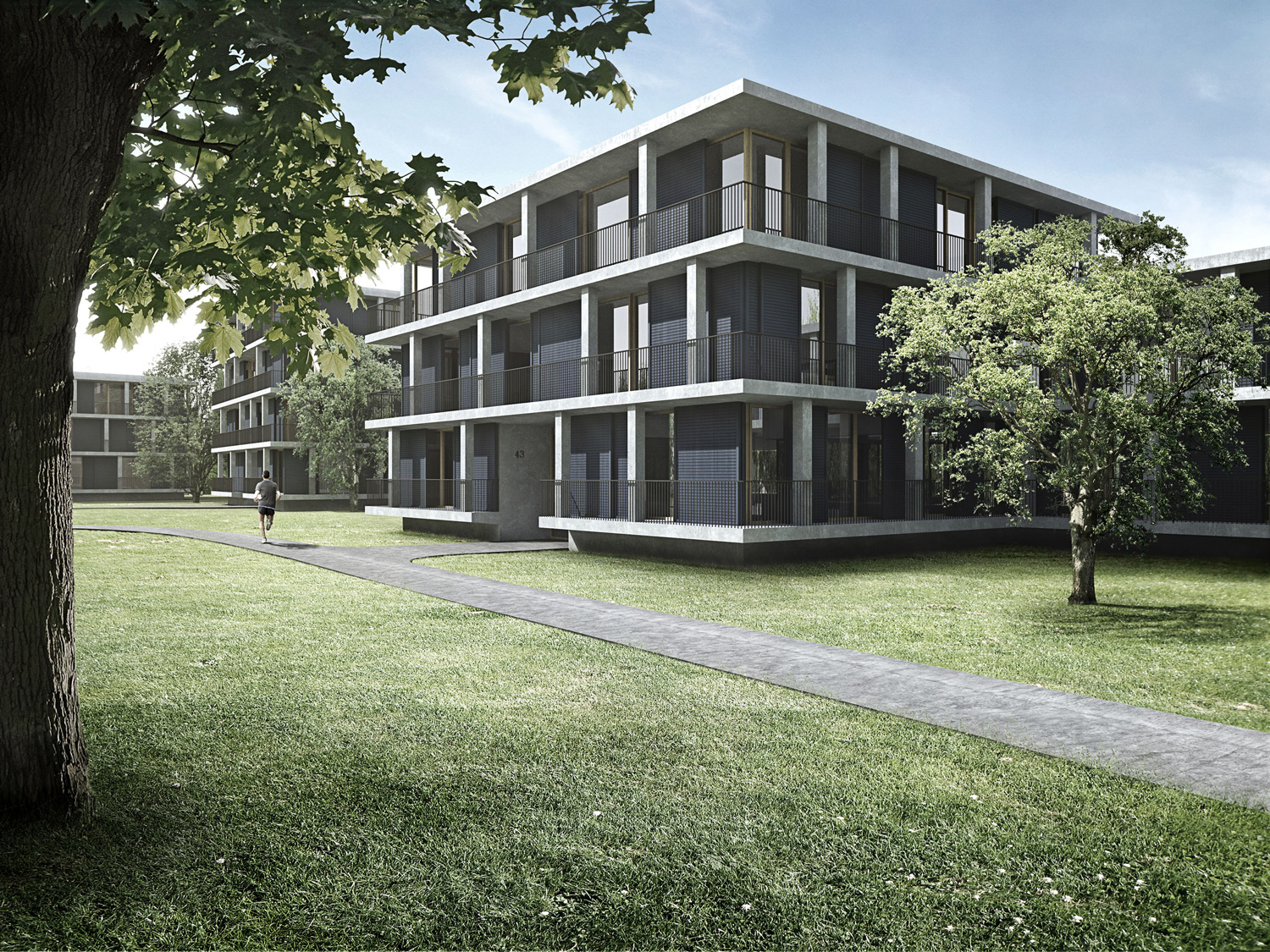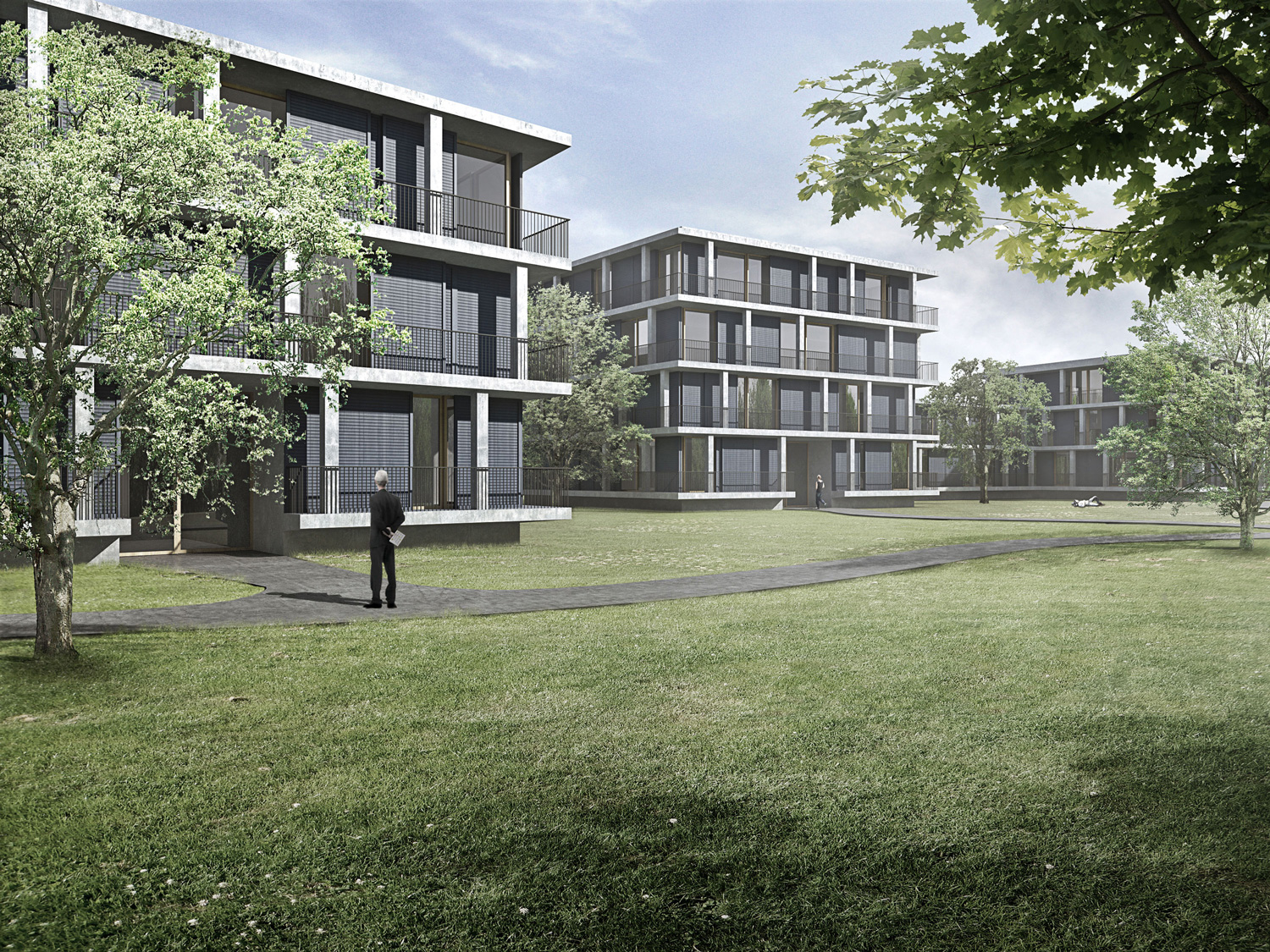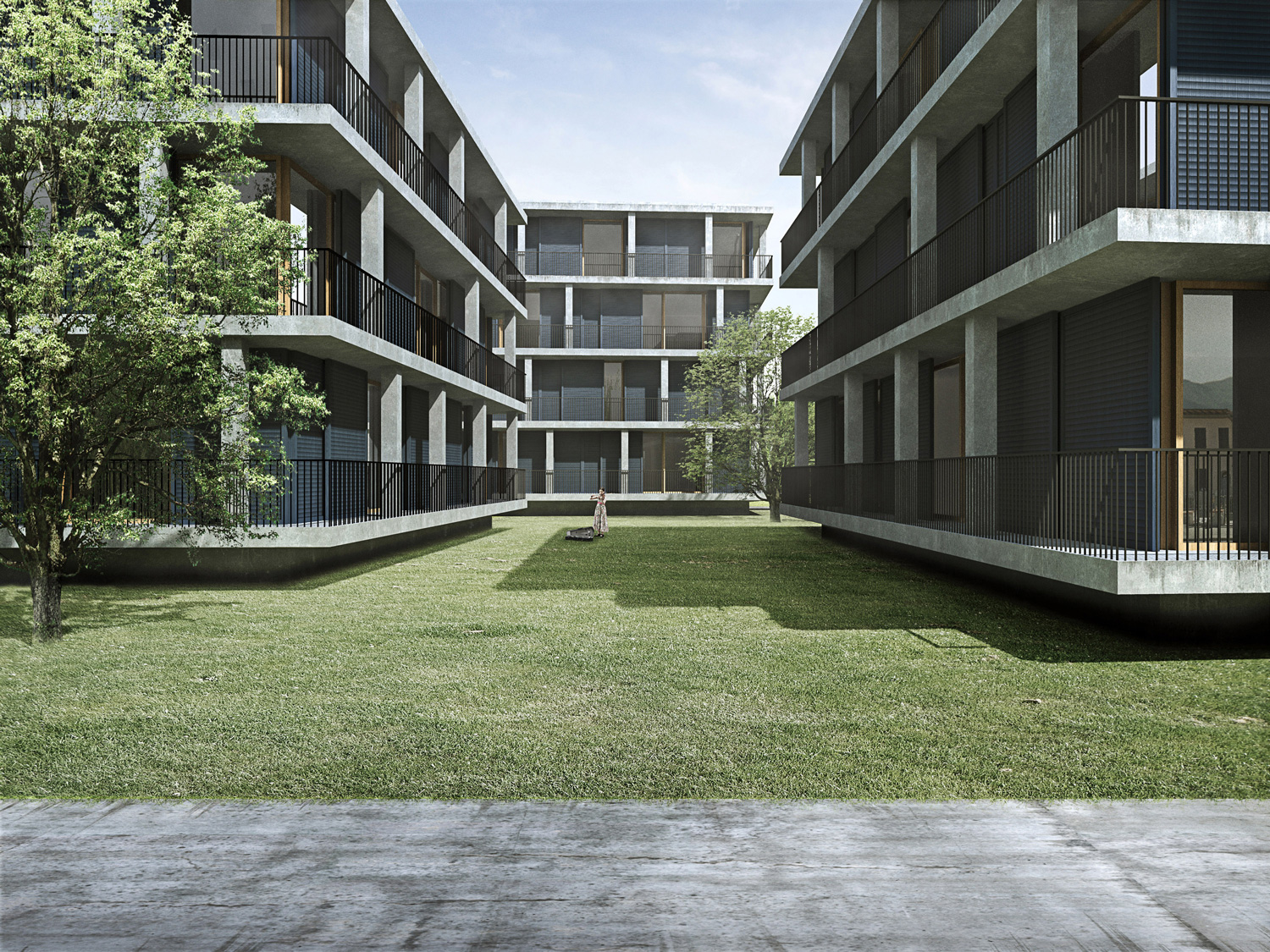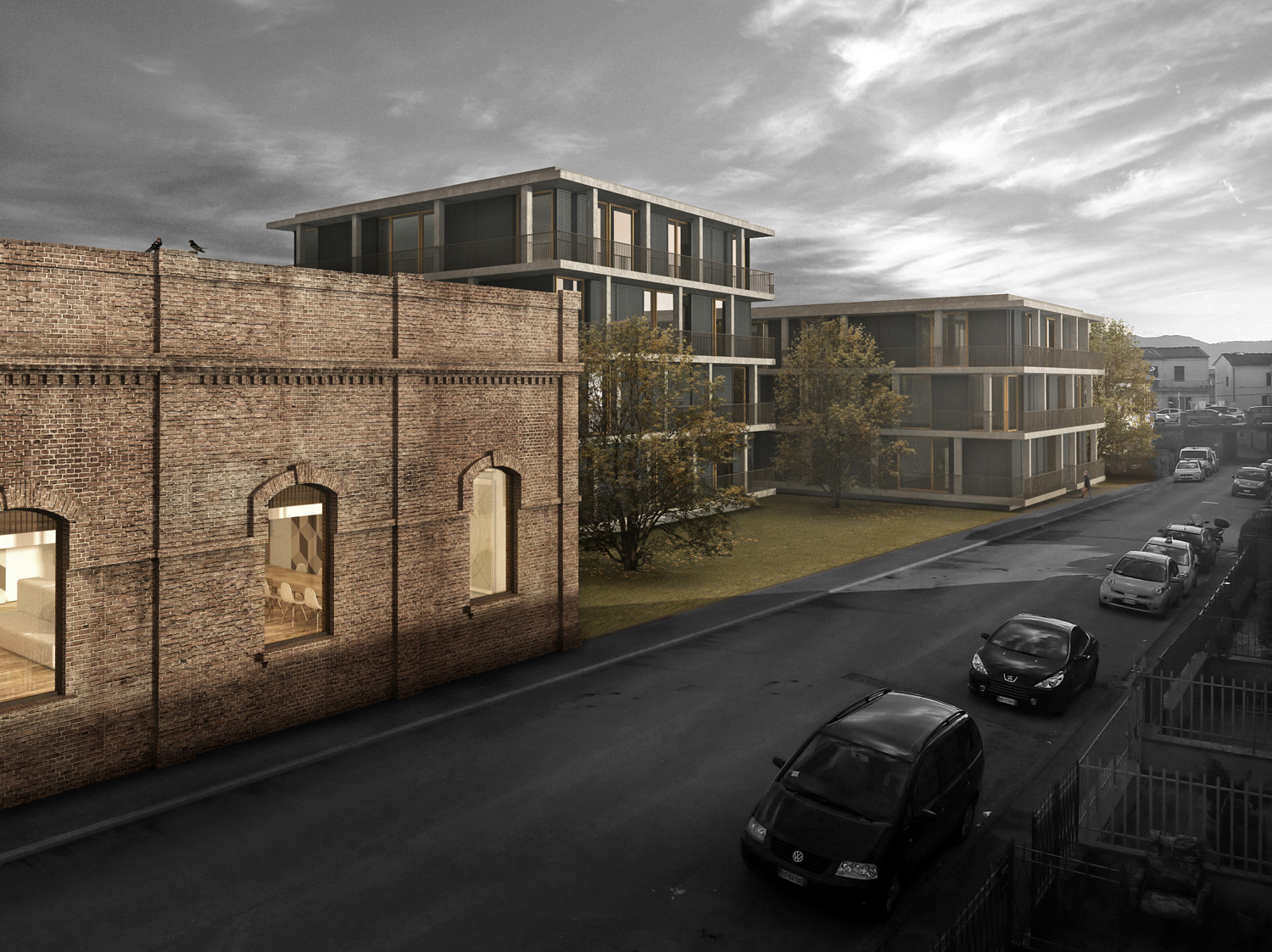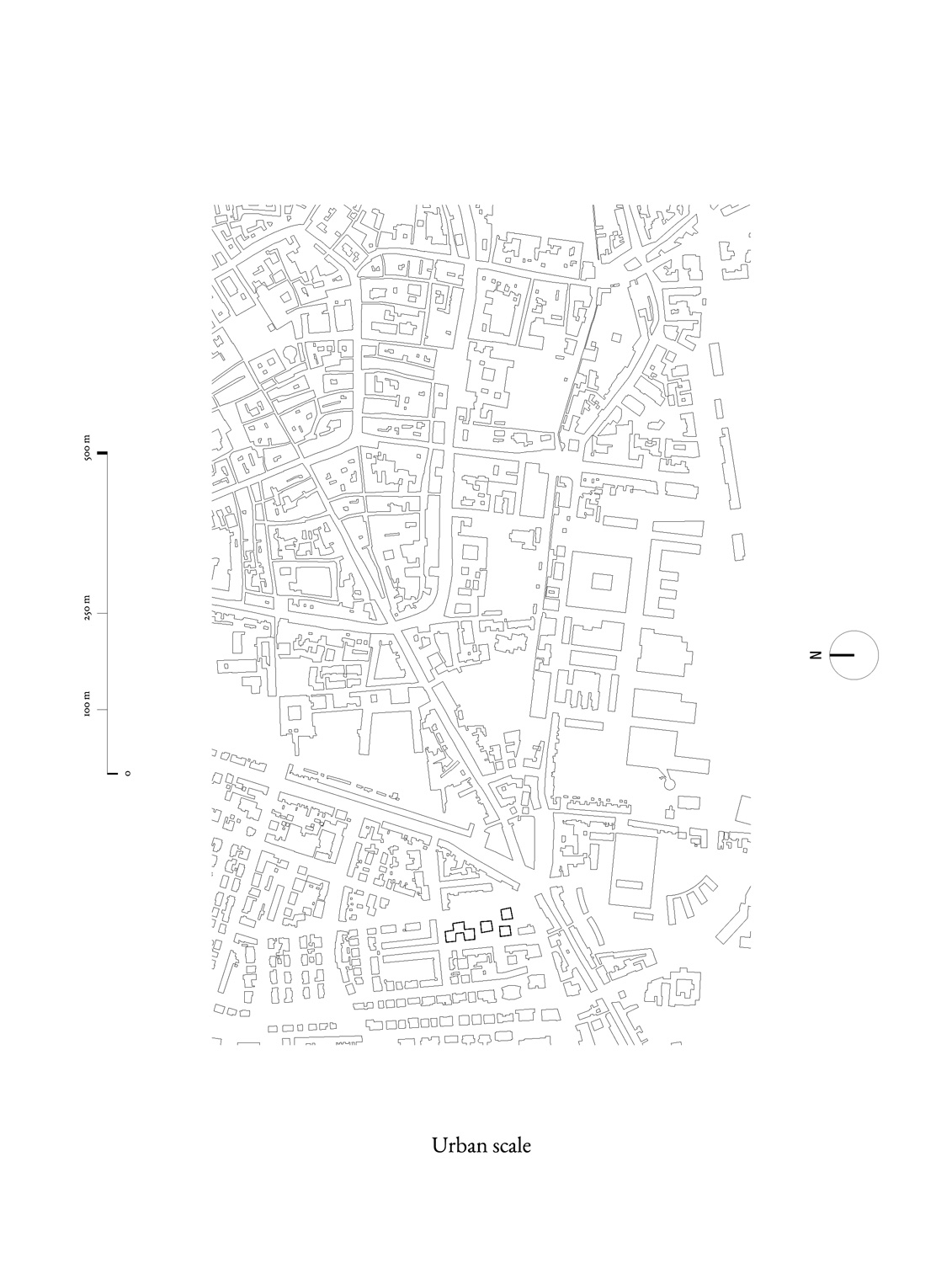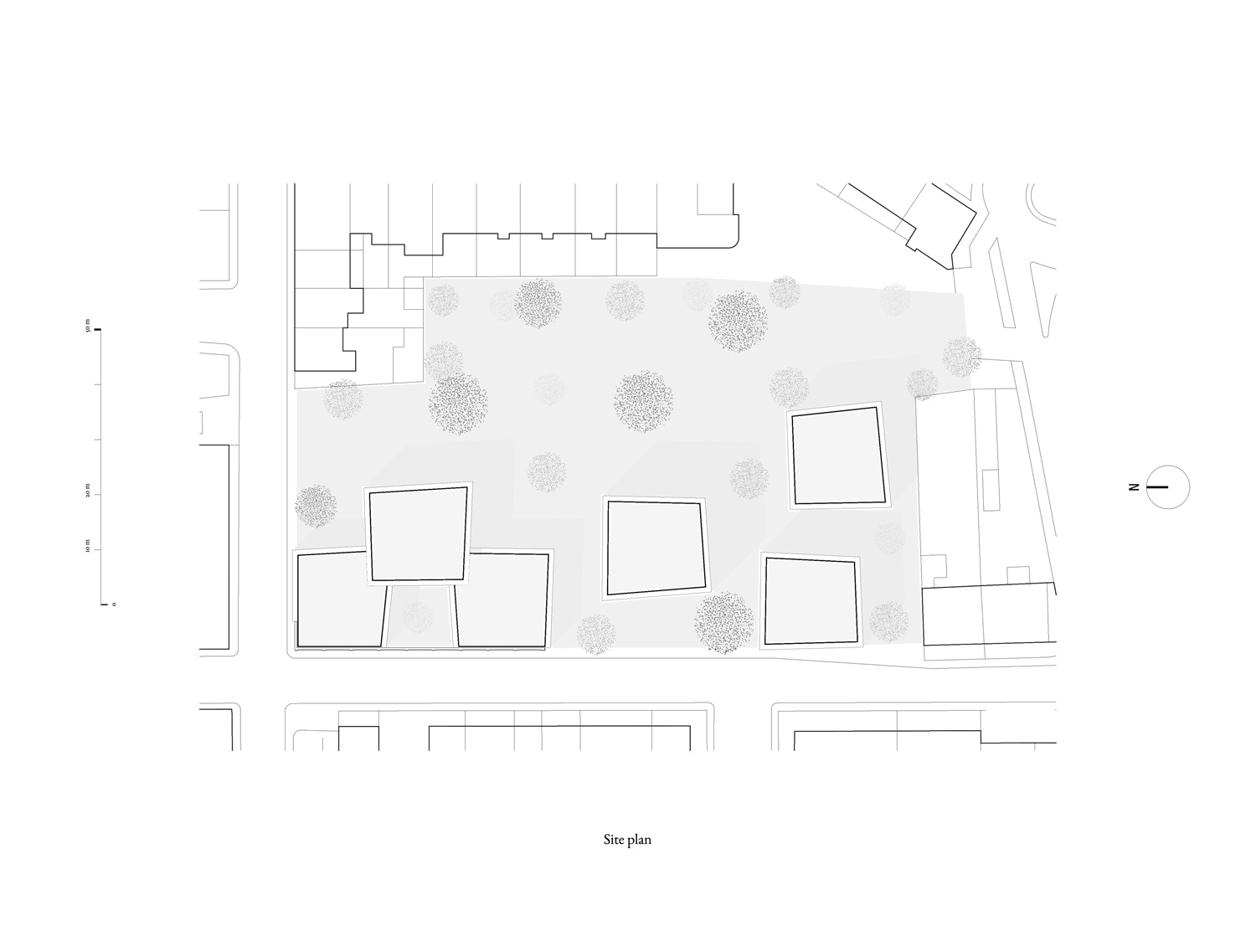2289-RUF-IT-2016
Client: Private
Status: Project (2016) On going
Location: Pistoia, Italy
Coordinates: 43.930680,10.905932
Climate: Humid subtropical, Temperate
Materials: Ceramic, Concrete
Environment: Urban
Visualizer: Studio
Scale: 7.780 ㎡ Medium
Types: Housing, Residential
The project for the complete redevelopment of an urban site just outside on the west-southern edge of Pistoia’s historical center, involved the demolition of a former industrial area. The district is characterized by public housing and small single-family houses, which give the streets a distinctive grain. The construction of apartment blocks of varying heights and different standards pursues the idea of concentrated interventions, aimed at retaining as much open green space around and between the buildings as possible; the development, that harmoniously completes the urban layout, optimizes the relationship with the context and increase and diversify the views onto the panorama. A set of six buildings, which follow the line of the surrounding streets, rebuild the lot, vacant as a result of the demolition of existing buildings.
The aim is to offer landscaping qualities worthy of a “slice of countryside” in an urban environment. So the architectures are arranged in a chessboard pattern to create the maximum amount of open space for each building. The buildings adapt to the topography, creating a flowing landscape through a slight turning of the blocks. The grounds will be accessed via a network of lanes. The design of the three connected architectures emphasizes the preservation of the existing brick factory façade enhancing the industrial aesthetic. All buildings are linked to an underground car park, enabling the site to be free from vehicles above ground. The external space is free from fences, because it is intended as part of the neighbourhood, that can be crossed and accessible to all to reinforce the urban character of this new part of the city.
Within the development there are six types of building differing in size and floor plan depending on the location, view and light conditions. The individual apartment buildings contain from 3 to 8 generously proportioned apartments, each accommodating a full floor of approximately 250 sqm, for a total of 32 apartments of various type and character built on the former industrial plot. The free space between the buildings stretches like a park as a meandering field of vegetation; a system of public footpaths leads through the space, making this inner world between the buildings accessible. While every apartment is a unique experience from within, all offer framed views of the urban garden. The design objective was to work on the definition of a boundary that separates the building from the city, the private dimension from the public space. The façade becomes an element of transition between the house and the urban space and is conceived to establish a balance between the need for privacy and the desire for opening towards the outside and the panoramic view.
An outer layer of terraces runs around the whole building and provides all apartments with generous outdoor spaces and a transition area between the interior living space and the surrounding nature. It offers a buffer zone between the intimate domestic interior of the apartments and the urban context outside. Moveable wooden elements allow the resident to further decide on the degree of privacy desired. The recessed plinth cause the buildings to seem to hover in the park landscape. The apartments are all located in a ring around a central circulation core and open out to the public park on more sides. All the six blocks adopt the same architectural language expressed through the ways in which the materials are worked (concrete, wood and metal). The character of these buildings is profoundly solid and material, is based on the simplicity of language and details. The buildings have a strong tectonic expression of concrete elements, which represent the structure and give a strong sensation of permanence. The volumes of different sizes fit well into the pattern of the surroundings and, at the same time, create an independent ensemble.
